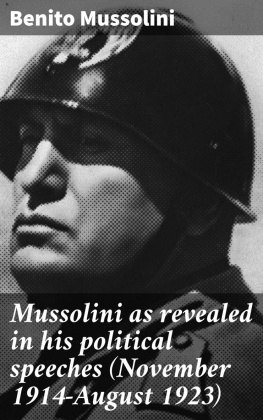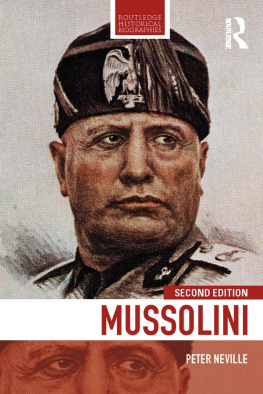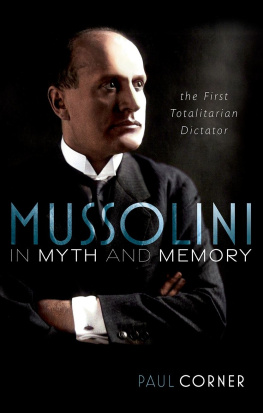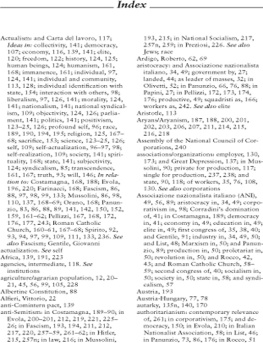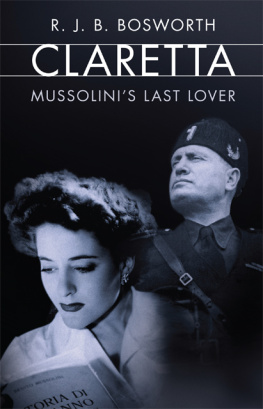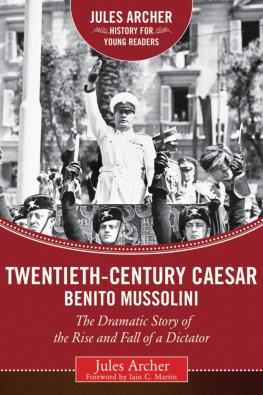Italian and Italian American Studies
Series Editor
Stanislao G. Pugliese
Hofstra University, Hempstead, NY, USA
This series brings the latest scholarship in Italian and Italian American history, literature, cinema, and cultural studies to a large audience of specialists, general readers, and students. Featuring works on modern Italy (Renaissance to the present) and Italian American culture and society by established scholars as well as new voices, it has been a longstanding force in shaping the evolving fields of Italian and Italian American Studies by re-emphasizing their connection to one another.
Editorial BoardEditorial Board
Rebecca West, University of Chicago, USA
Josephine Gattuso Hendin, New York University, USA
Fred Gardaph, Queens College, CUNY, USA
Phillip V. Cannistraro, Queens College and the Graduate School, CUNY, USA
Alessandro Portelli, Universit di Roma La Sapienza, Italy
William J. Connell, Seton Hall University, USA
More information about this series at http://www.palgrave.com/gp/series/14835
Alessandra Antola Swan
Photographing Mussolini
The Making of a Political Icon
1st ed. 2020

Logo of the publisher
Alessandra Antola Swan
Independent Author, London, UK
ISSN 2635-2931 e-ISSN 2635-294X
Italian and Italian American Studies
ISBN 978-3-030-56505-3 e-ISBN 978-3-030-56506-0
https://doi.org/10.1007/978-3-030-56506-0
The Editor(s) (if applicable) and The Author(s), under exclusive license to Springer Nature Switzerland AG 2020
This work is subject to copyright. All rights are solely and exclusively licensed by the Publisher, whether the whole or part of the material is concerned, specifically the rights of translation, reprinting, reuse of illustrations, recitation, broadcasting, reproduction on microfilms or in any other physical way, and transmission or information storage and retrieval, electronic adaptation, computer software, or by similar or dissimilar methodology now known or hereafter developed.
The use of general descriptive names, registered names, trademarks, service marks, etc. in this publication does not imply, even in the absence of a specific statement, that such names are exempt from the relevant protective laws and regulations and therefore free for general use.
The publisher, the authors and the editors are safe to assume that the advice and information in this book are believed to be true and accurate at the date of publication. Neither the publisher nor the authors or the editors give a warranty, expressed or implied, with respect to the material contained herein or for any errors or omissions that may have been made. The publisher remains neutral with regard to jurisdictional claims in published maps and institutional affiliations.
cover credit: ullstein bild Dtl. / Contributor / GettyImages
This Palgrave Macmillan imprint is published by the registered company Springer Nature Switzerland AG
The registered company address is: Gewerbestrasse 11, 6330 Cham, Switzerland
Acknowledgements
I would like to thank Stephen Gundle for his constant guidance and support, encouraging me to develop the necessary intellectual independence for my research while always ensuring the relevance and pertinence of the argument. I would also like to acknowledge Luciano Cheles, the late Christopher Duggan, David Forgacs, Paul Ginsborg, Simona Storchi and Giuliana Pieri for their insight, understanding and constructive comments.
I am grateful to those who have personally helped during my research: Isabella Canino, Ferdinando Carrese, Martina Caruso, Cesare Colombo, Marco Della Torre, Tita Di Domenicantonio, Roberto Dulio, Giovanna Ginex, Francesco Giunta, Cristina and Nino Mascardi, Adolfo Mignemi, Cynthia Rich, Sandro Rizzi, Ren and Giny Van Roij, Giuliana Scim, Sergio Spinelli, Enrico Sturani, Mario Tursi, Colette Wilson.
Many individuals from institutions, archives, collections, private and public have provided me with help and advice, in particular I would like to thank the following for their time and expertise:
Dimitri Affri (Archivist); Saverio Amadori (Archivist); Andrea Amatiste (Istituto Luce); Aldo Coletto (Biblioteca Nazionale Braidense); Paolo Cortesi (Emeroteca Biblioteca Comunale Aurelio Saffi Forl); Fiorenza Danti, Franco DEmilio, Cinzia Romagnoli (Archivio di Stato Forl); Danilo Fullin (Centro Documentazione Rcs Quotidiani Corriere della Sera); Alessandra Gini (Fondazione di Venezia); Fiorella Superbi Gioffredi (Archivio Fotografico Villa I Tatti); Roberto Gollo (Sala Microfilm Biblioteca Nazionale Braidense); Daniela Mericio (Olycom); Silvia Paoli, Alessandro Oldani, Luca Postini, Mauro Maffeis and Nadia Piccirillo (Civico Archivio Fotografico Castello Sforzesco); Elena e Patrizia Piccini (Fototeca Storica Nazionale Ando Gilardi); Nino Romeo (Libreria Hoepli); Francesca Tramma (Archivio Storico Corriere della Sera); Antonella Imolesi Pozzi (Biblioteca Comunale Aurelio Saffi Fondo Piancastelli Forl); Michele Losacco (Biblioteca Nazionale Braidense).
Contents
Part I Setting the Scene
Part II Production
Part III Audiencing
Part IV Modalities
List of Figures
About the Author
Alessandra Antola Swan
is a cultural historian and her Ph.D. on Mussolini and photography was part of the project The Cult of the Duce. Mussolini and the Italians, 19182005. In 2013 she organised the ASMI conference Iconic Images and in 2016 she was guest editor for the follow up special issue of Modern Italy 2016.
The Author(s) 2020
A. Antola Swan Photographing Mussolini Italian and Italian American Studies https://doi.org/10.1007/978-3-030-56506-0_1
1. Introduction
Alessandra Antola Swan
(1)
Independent Author, London, UK
Reflecting on the task of classifying photography, Roland Barthes notes that photographs have something tautological about them in that they cannot be separated from what they represent, as if both photograph and referent were affected by the same amorous or funereal immobility, at the very heart of the moving world: they are glued together, limb by limb, like the condemned man and the corpse in certain tortures. Barthess dramatic use of words expresses the difficulty in separating the various layers of meaning produced by photographs while Stephen Shore explains that photographs can be read on different levels:
To begin with, it is a physical object, a print. On this print is an image, an illusion of a window on to the world. It is on this level that we usually read a picture and discover its content []. Embedded in this level is another that contains signals to our minds perceptual apparatus. It gives spin to what the image depicts and how it is organised.
Reading the photograph requires maintaining the illusory power of the image before the eyes and independent from the photograph as physical object thus, in Graham Clarks words making the photograph one of the most complex and most problematic forms of representation. As well as fear, repression and control there was also entertainment, celebration and a certain level of creativity. The emergence of the masses as active participants in public life, following the revolutions of the eighteenth century and the struggles for citizenship of the nineteenth, corresponded to the development of a new language of political persuasion .


